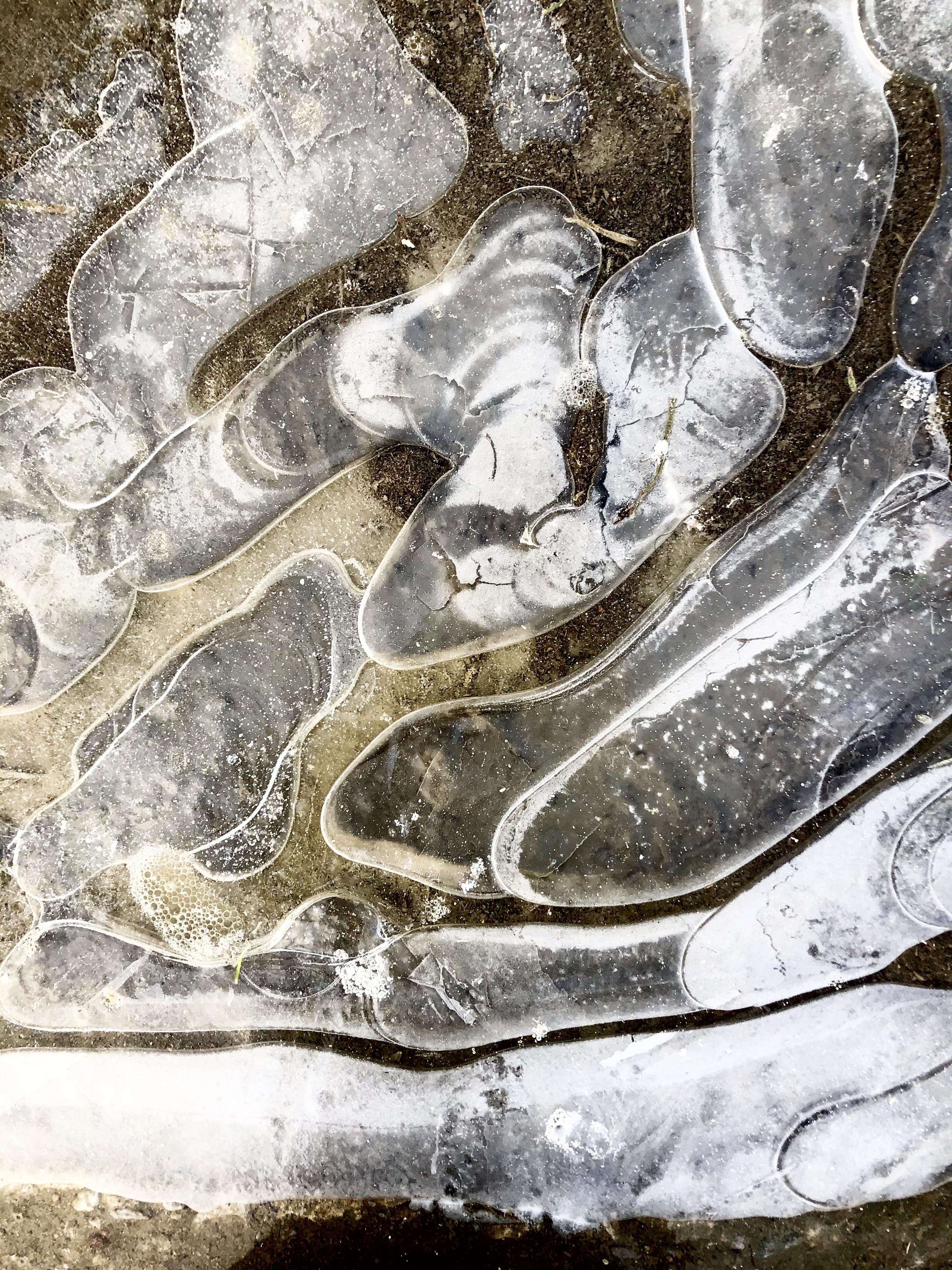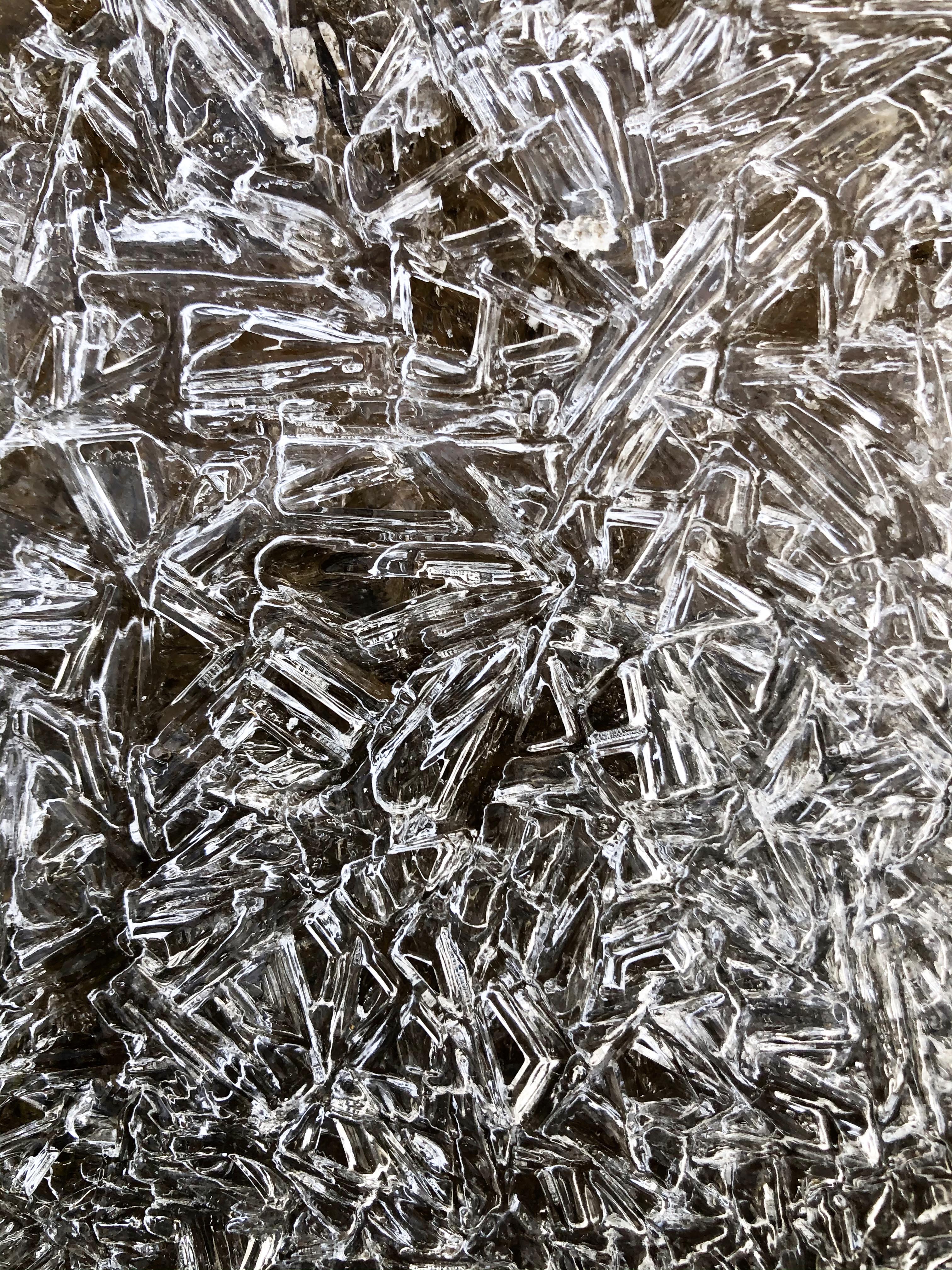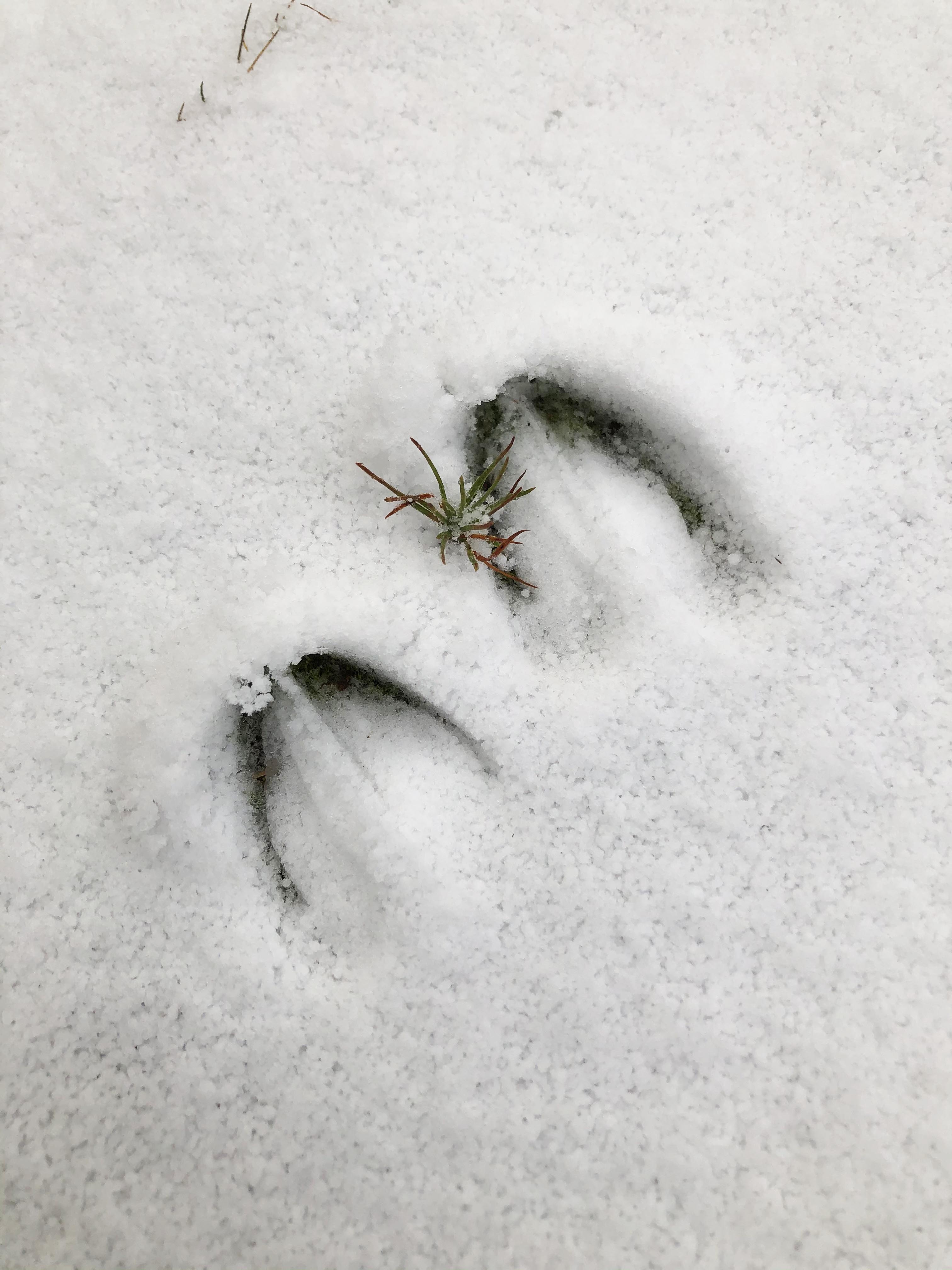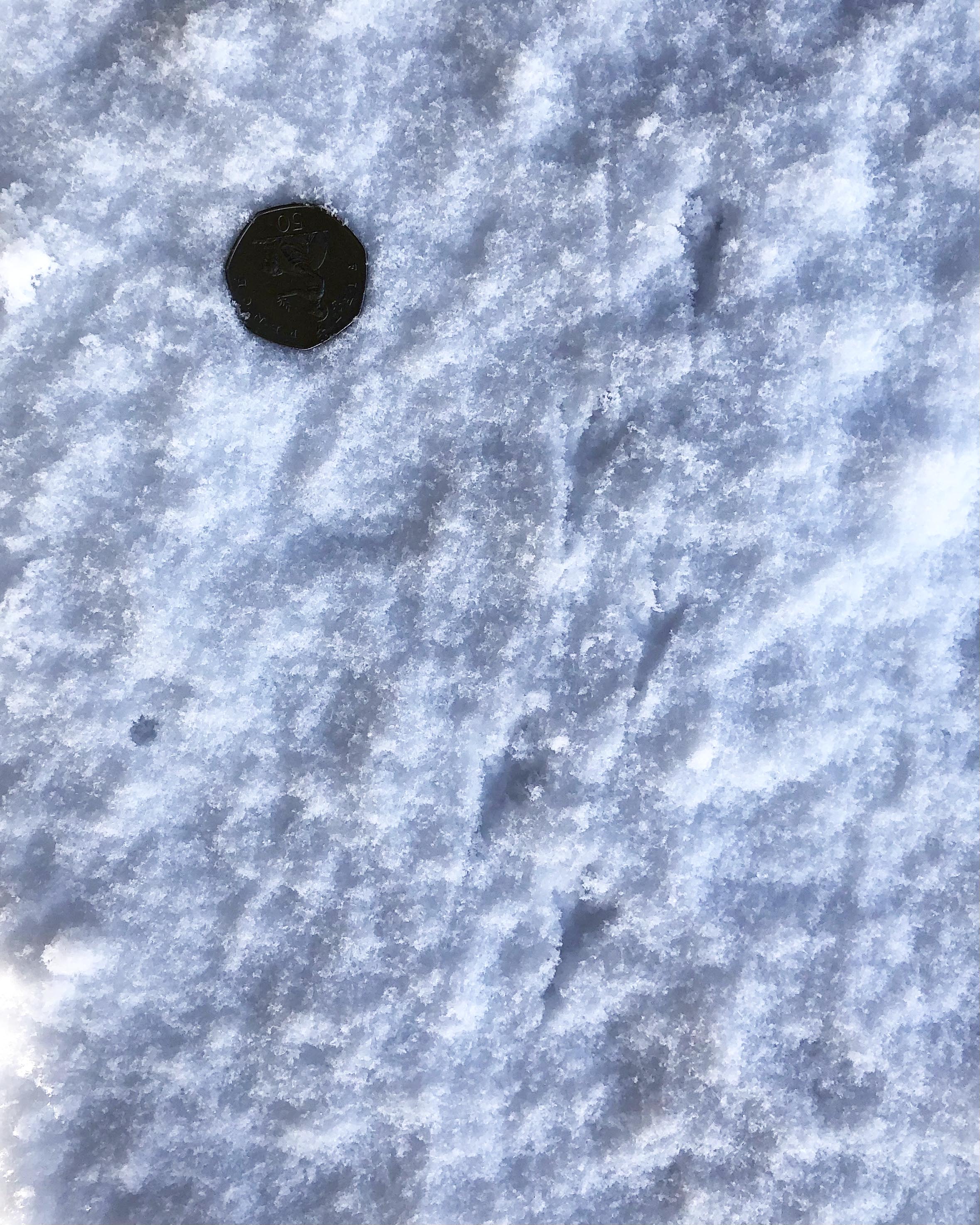
I’ve been loving my wintery walks recently and don’t actually want spring to come just yet. We don’t often get snow by the coast but it was finally cold enough for a spell of it this week. When I’m out and about I’m usually peering up and searching for birds or squirrels in the trees. But when the snow came I found myself watching my feet a little more, mostly to avoid patches of ice that would send me flying but also to admire some of nature’s art. By doing this I also discovered some special secrets.

Frost and ice have always fascinated me. They can transform everyday objects into magical ones by covering them in the most exquisite artwork. Puddles and windshields are given new textures and patterns. Depending on where you find frost, the shapes can vary significantly. The two images below are both of puddles but one is out in the open and exposed to sea breezes while the other is tucked low in a muddy trail, sheltered on both sides by tangles of gorse. The results are two complete contrasts of smooth swirls and sharp shards.


The snow also reveals the goings on of our more secretive neighbours, preserving snapshots of where different feet have trodden. This was excellent news for me as I have outrageously bad luck when it comes to seeing deer. While the majority of Scotland seems to be plagued by deer and has grown so accustomed to them that they’ve become a bore or even a nuisance, I’m absolutely enchanted by deer but see one every few months if I’m lucky. So the other morning I was thrilled to see that I’d crossed paths with a roe deer, even if I was there several hours later. There in the snow were the most perfect roe tracks I’d seen, and the sporadic placement suggested that the deer had been browsing in one place. How lovely it would have been to see it! I shall continue to look for them.


Elsewhere I made more discoveries. Beneath a clump of Sitka spruce was a large muddled patch of pheasant prints with several tracks spreading outwards like starfish arms. Each print was placed exactly in front of the previous one – I can just imagine the pheasant putting each foot down slowly and methodically before shifting its weight. Beside these thick prints were the scratches of much daintier ones that I guessed belonged to a blackbird, which often forage on the ground while smaller birds flutter above.


I left the most exciting find until last. Crossing a main path into a small grassy tunnel in the verge were several pairs of paw prints. I knew the square shape of badger prints but these were much smaller. I consulted my new indulgence purchase (Tracks and Signs of the Animals and Birds of Britain and Europe by Lars-Henrik Olsen) and checked first for pine marten. Although these were a similar shape, they were bulkier and didn’t seem right. The pictures of the stoat prints, however, looked much more like it: arranged in pairs like mine were on the trail and a better size match (3.5-4cm hind print). Again I wished I could have been a fly on the leaf when the stoat dashed across the path. Who knows what time it was, but one of the many beauties of snow is it can freeze time and preserve nature’s wonders just a little longer.


